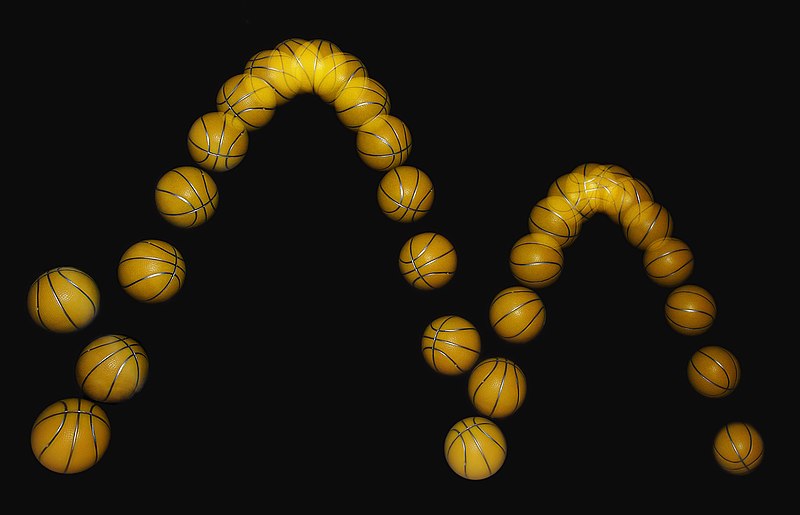ملف:Bouncing ball strobe edit.jpg

حجم هذه المعاينة: 800 × 515 بكسل. الأبعاد الأخرى: 320 × 206 بكسل | 640 × 412 بكسل | 1٬024 × 659 بكسل | 1٬280 × 824 بكسل | 1٬800 × 1٬159 بكسل.
الملف الأصلي (1٬800 × 1٬159 بكسل حجم الملف: 293 كيلوبايت، نوع MIME: image/jpeg)
تاريخ الملف
اضغط على زمن/تاريخ لرؤية الملف كما بدا في هذا الزمن.
| زمن/تاريخ | صورة مصغرة | الأبعاد | مستخدم | تعليق | |
|---|---|---|---|---|---|
| حالي | 17:27، 8 أكتوبر 2007 |  | 1٬800 × 1٬159 (293 كيلوبايت) | Richard Bartz | {{Information |Description=A bouncing ball captured with a stroboscopic flash at 25 images per second. Note that the ball becomes significantly non-spherical after each bounce, especially after the first. That, along with spin and air-resistance, causes |
استخدام الملف
ال6 صفحات التالية تستخدم هذا الملف:
الاستخدام العالمي للملف
الويكيات الأخرى التالية تستخدم هذا الملف:
- الاستخدام في am.wikipedia.org
- الاستخدام في az.wikipedia.org
- الاستخدام في ba.wikipedia.org
- الاستخدام في be.wikipedia.org
- الاستخدام في bjn.wikipedia.org
- الاستخدام في bn.wikipedia.org
- الاستخدام في ca.wikipedia.org
- الاستخدام في ca.wikibooks.org
- الاستخدام في ckb.wikipedia.org
- الاستخدام في cs.wikipedia.org
- الاستخدام في cv.wikipedia.org
- الاستخدام في da.wikipedia.org
- الاستخدام في de.wikipedia.org
- الاستخدام في de.wiktionary.org
- الاستخدام في en.wikipedia.org
- Parabola
- Newton's laws of motion
- Inelastic collision
- Past
- Stroboscope
- Portal:Science
- Coefficient of restitution
- User talk:MichaelMaggs/Archive/2
- Wikipedia:Featured pictures thumbs/08
- Wikipedia:Featured picture candidates/October-2007
- User talk:MER-C/archives/19
- Wikipedia:Featured picture candidates/Projectile motion
- Wikipedia:Wikipedia Signpost/2007-10-22/Features and admins
- Portal:Physics/2008 Selected pictures
- Wikipedia:Featured pictures/Sciences/Others
- User talk:MER-C/archives/21
- Wikipedia:Picture of the day/February 2008
- Template:POTD/2008-02-22
- Portal:Physics/Selected picture/March 2008
- User talk:MichaelMaggs/Archive/2008
- Talk:Field line
- Wikipedia:Wikipedia Signpost/2007-10-22/SPV
- User:Daniel Mietchen/Science communication gallery
اعرض المزيد من الاستخدام العام لهذا الملف.


